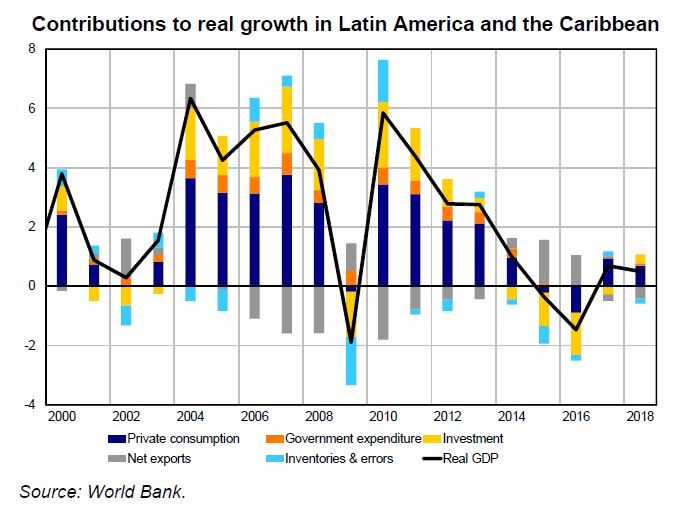The economic determinants of social crises in Latin America
Despite a rise in the standard of living that has led to a reduction in poverty, inequalities remain high, particularly between urban and rural areas in terms of access to public services. These inequalities are exacerbated in the context of a marked slowdown in growth since 2011 and limited budgetary room for manoeuvre to support the economy and reduce inequalities. Various protest movements have emerged in the region in 2019.
Following a period of fast growth averaging 4.2% per year in the 2000s, Latin American and Caribbean economies have slumped back to an average of 1.3% since 2011. This slowdown derives from a structural fall in productivity, together with a series of cyclical shocks that are either country-specific or common to the region (lower commodity prices, less demand from China, etc.), and which have highlighted shortcomings in the growth model and hastened its obsolescence.
Despite an improvement in standard of living for all sections of the population which enabled poverty to be reduced (between 2000 and 2018, 12.4% of inhabitants exited poverty and 7.8% exited extreme poverty), severe economic inequality persists. In 2018, in Latin America and the Caribbean, the first five income deciles received only 17% of all income. This means that cyclical downturns could plunge a significant proportion of the population back into poverty. There are also other manifestations of inequality, especially between urban and rural regions with regard to access to public services (energy, healthcare, education, infrastructure), which are aggravated by a marked slowdown in growth and little fiscal leeway to support the economy and reduce inequality. In 2019, this led to a number of protest movements in the region.
The COVID-19 pandemic is having a substantial impact on Latin America and the Caribbean and is likely to further complicate matters. In addition to the adverse effects of lockdown measures on domestic supply and demand, the region's countries are experiencing lower external demand due to (i) the drop in prices and demand for commodities and agri-food products, (ii) the collapse of tourism, (iii) a strong contraction in migrant remittances, and (iv) portfolio outflows.
